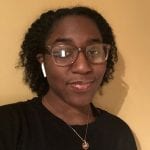Did you know that 87 percent of content taught about Native Americans includes only pre-1900 context and 27 states did not name an individual Native American in their history standards? Meaning after the wars and carnage that the Natives were involved in they began to be excluded from history books. In America today, this history is mistaught and sometimes ignored. I care deeply about this topic because I don’t know my heritage. On my dad’s side, we don’t know where our ancestors were taken from, but on my mom’s side, there is a long line of Native Americans. I am far from it, and disappointed I was never taught much of it in school. Because Native American history is being mistaught, we need pathways for native tribes to share their history, a revised curriculum to include this history, and anti-bias training for teachers.
Some may think “I remember learning about Thanksgiving, so what’s the big deal?” In “Educating America”, Angela Cavender Wilson stated schools do teach about Natives IN history but the problem is that what schools are teaching is “so radically different from those of [Native] elders” and asks “Where did these historians get their information about Native Americans?” This history that we know today is not from the Natives’ perspective because we do not accept the oral histories of Native peoples. Anna Diamond from the Smithsonian Institution believes “If we had a better understanding of other people’s experience … then we would be less susceptible to inaccurate narratives and more capable of responding in thoughtful ways.” Stereotypes and falsehoods about Native peoples were created due to a lack of communication and understanding.
Edwin Schupman, manager of the National Museum of the American Indian’s national education initiative, has worked to find a way to communicate with local tribes to rewrite the history in their schools. This solution will ensure that students are provided accurate and detailed information in class and serve as an example for the rest of the country. Shana Brown, a former teacher in the Pacific Northwest, wrote and taught lessons about Northwest Native peoples. Ms. Brown cared about her students’ education enough to not be apathetic towards this injustice and give her students an opportunity to learn this history. State governors can also sign off on ethnic studies programs to include Native American history and culture classes. It’s not just about incorporating this history, but about teaching without bias. Unbiased teachers lead to unbiased teaching which then leads to a just education ensuring children are not ignorant to the true history of America and its Natives.
Educating students on Native American history is important. Society is negatively impacted when stereotypes, racism, and ignorance grow due to miseducation in schools. We need pathways for Native tribes to share their history, a revised curriculum to include this history, and anti-bias training for teachers. If schools teach accurate American history, then not only will this dissolve an invisible divide that we’ve had for so long but it will rewrite history so Natives are not stripped of their identity and students like me can be able to learn our history.
Works Cited
Diamond, Anna. “Inside a New Effort to Change What Schools Teach About Native American History.” Smithsonian.com, Smithsonian Institution, 18 Sept. 2019.
Walker, Richard. “Native History Is American History: NMAI Is Bringing Indigenous Perspectives Into the Classroom.” NMAI Magazine, 2020, Spring.
McCollum, Sean, et al. “Rewriting History-for the Better.” Teaching Tolerance, 2015, Fall.
Zingg, Laura. “Promoting Indigenous Sovereignty Through Education.” Teach For America, 31 Oct. 2019.
Wilson, Angela Cavender. “Educating America: The Historian’s Responsibility to Native Americans and the Public: Perspectives on History: AHA”. Educating America: The Historian’s Responsibility to Native Americans and the Public | Perspectives on History | AHA, 1 May 2000.
